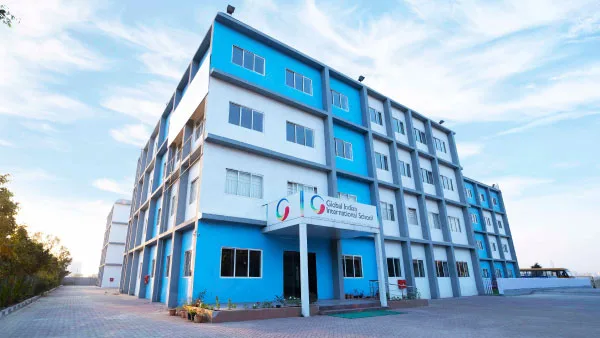In our increasingly interconnected world, where communication transcends borders and cultures, the significance of language proficiency cannot be overstated. The realm of education has evolved to embrace this global paradigm shift, with international school curricula emerging as a formidable force in nurturing linguistic dexterity among students. Beyond the confines of traditional language instruction, these innovative frameworks intertwine language acquisition with cultural exploration and cognitive development.
This article will take you on a journey through the dynamic landscape of international school curricula, delving into their exceptional ability to cultivate not only multilingual competence but also the holistic growth of students.
So let’s navigate the corridors of this educational approach, uncovering the transformative power it wields in fostering a new generation.
Why Choose International Curriculum?
In a world that seems to shrink with each passing day, where information traverses oceans and cultures intermingle like never before, the choice of an educational curriculum takes on a new dimension of importance.
Enter the Kingdom of International curricula, a refreshing departure from conventional educational approaches that opens doors to a world of possibilities for both students and their families.
So, why choose an International curriculum? Here are some compelling reasons that make this choice a transformative one.
1. Linguistic Symphony: Picture a classroom where English, French, Mandarin, Spanish, and more harmoniously dance through the airwaves. One of the most intriguing aspects of an International curriculum is its commitment to fostering multilingual proficiency. Students are immersed in a linguistic kaleidoscope, enabling them not only to communicate across borders but to truly understand and appreciate the intricacies of global communication. By learning different languages, students gain a unique cognitive edge, enhancing their problem-solving skills and cultural empathy.
2. Cultural Odyssey: Beyond language, International curricula plunge students into an era where global understanding is paramount, students are exposed to a diverse range of perspectives, traditions, and histories. This not only breeds cultural sensitivity but also cultivates a curiosity-driven mindset that thrives in an ever-evolving world. Through literature, history, and social studies, students embark on a journey that transcends textbooks, forging connections between their own identity and the myriad identities that define humanity.
3. Holistic Enlightenment: Traditional curricula often focus solely on academic achievements, but International programs take a different route. They embrace the philosophy that education extends beyond textbooks and standardized tests. By integrating the arts, sports, and community service, students are nurtured into well-rounded individuals. This holistic approach recognizes that true success is not just measured by grades but by the ability to adapt, collaborate, and lead in an ever-changing landscape.
4. Inquiry-Based Alchemy: The magic of an International education lies in its emphasis on inquiry-based learning. Students aren’t passive recipients of information; they’re active explorers, encouraged to question, experiment, and discover. This dynamic approach ignites their critical thinking and problem-solving prowess, enabling them to tackle real-world challenges with ingenuity and confidence.
5. Global Networking: Here classmates aren’t just peers; they’re potential lifelong connections spread across the globe. This global network, spanning continents and Cultural awareness, is a priceless asset in an era where collaboration knows no boundaries. Students learn to work with diverse teams, bridging time zones and technologies to create solutions that address global concerns.
6. Future-Ready Pioneers: The world of work is evolving at a rapid pace, demanding skills beyond the conventional. International curricula align with this reality, equipping students with the 21st-century skills of communication, adaptability, cultural competence, and digital fluency. These are the very skills that empower them to navigate the unpredictable currents of the future job market.
The choice of an International curriculum weaves threads of linguistic prowess, cultural awareness, holistic development, inquiry-driven thinking, global networking, and future-ready skills into a narrative of unparalleled enrichment. It’s a choice that doesn’t just prepare students for the future – it propels them into the vanguard of global change-makers. So, why choose an international curriculum? The question shifts from “why” to “how could one resist?”
Why should anyone take up an International curriculum?
Diving into an International curriculum is akin to embarking on a journey that extends far beyond the borders of traditional education. It’s a deliberate choice, a conscious step towards a horizon that promises a spectrum of benefits that traditional curricula may not fully encompass. Here’s a fresh perspective on why anyone seeking a transformative educational experience should seriously consider the allure of an International curriculum.
1. Cognitive Kaleidoscope: Imagine the mind as a canvas, waiting to be painted with the vibrant strokes of varied languages, cultures, and perspectives. An international curriculum is an artist’s palette, offering a symphony of colors that enrich cognitive development. By immersing in diverse linguistic landscapes and cultural nuances, students cultivate cognitive flexibility and an innate ability to navigate complexities. This multidimensional thinking becomes their compass in a world that prizes adaptability and innovation.
2. Adventures in Learning: Traditional classrooms can sometimes feel like a closed book, confined to prescribed syllabi and rigid structures. In contrast, an International curriculum unfurls as an ever-unfolding adventure. It transforms learning from a monotonous exercise to an exhilarating quest for knowledge. Through project-based learning, experiential education, and real-world applications, students embark on intellectual expeditions that not only satiate their curiosity but ignite an eternal flame for lifelong learning.
3. Global Soul, Local Heart: The charm of an International curriculum lies in its ability to cultivate a global soul while keeping the roots firmly grounded in local values. It’s not about abandoning one’s heritage; it’s about embracing it with a newfound appreciation. Students seamlessly bridge the chasm between their cultural identity and the mosaic of world cultures. This harmonious blend nurtures a balanced sense of self – a global citizen with a local heart.
4. Unmasking the Universe: In an International curriculum, knowledge isn’t confined within the walls of textbooks; it’s a living, breathing entity that manifests through exploration, questioning, and experimentation. Students don’t just consume facts; they uncover the underlying mechanisms that govern the universe. Science isn’t just equations; it’s the language of discovery. History isn’t just dates; it’s a symphony of human narratives. This approach transforms education from a scripted performance to an improvisational masterpiece.
5. Liberation of Potential: An International curriculum is more than an educational path; it’s a gateway to unlocking one’s true potential. It dismantles the confines of a one-size-fits-all approach and celebrates the individuality of each student. Through personalized learning, students are encouraged to explore their passions, dive deep into subjects that ignite their curiosity, and forge their own intellectual identities. This liberation from the conventional mold allows them to reach heights they might never have imagined within the constraints of a rigid curriculum.
6. Resilience and Grit: Life seldom follows a linear trajectory, and an International curriculum mirrors this reality. By navigating the diverse challenges posed by different languages, cultures, and learning methodologies, students develop resilience and grit as they overcome obstacles and setbacks. This resilience isn’t just confined to academics; it becomes a life skill, a steadfast companion in the face of adversity.
7. Ecosystem of Inspiration: An International curriculum doesn’t exist in isolation; it’s part of a thriving ecosystem that nurtures inspiration. Collaborative projects, international exchange programs, and interactions with scholars from around the world create an environment where ideas flourish. This ecosystem of inspiration isn’t confined to the classroom; it extends to every facet of life, enriching students with a perpetual wellspring of creativity.
8. Bridge to Multidisciplinarity: The complexities of the modern world demand a multidisciplinary approach. An International curriculum inherently blurs the lines between disciplines, fostering a holistic understanding of interconnected subjects. Science meets art, mathematics intersects with philosophy, and history intertwines with technology. This interdisciplinary perspective nurtures holistic thinkers who can dissect and solve multifaceted challenges with finesse.
9. Legacy of Impact: When one chooses an International school with an international curriculum, they join a lineage of trailblazers who have left an indelible mark on the world. From Nobel laureates to humanitarians, entrepreneurs to environmentalists, International curriculum alumni are renowned for their contributions. By immersing in this transformative educational journey, students position themselves to carry forward a legacy of impact that spans generations.
Choosing an International curriculum is a deliberate step towards crafting a life that resonates with the symphony of human achievement, and an unequivocal proclamation that the pursuit of knowledge knows no borders. It’s an investment in one’s potential, a canvas for personal growth, and a passport to a future that’s as boundless as the horizons it unveils.
Fostering Language and Literacy Development
Fostering Language proficiency and Literacy Development is like nurturing a garden of words, where the seeds of communication bloom into a vibrant conglomeration of expression. Let’s explore this captivating journey through the domain of linguistic growth, uncovering the secrets to cultivating eloquence and opening doors to imagination.
1. Language as a Symphony: Imagine language as a symphony of sounds, a melodic dance of words that paints a picture with each utterance. From the lilting cadence of poetry to the precise strokes of scientific discourse, language is a palette that colors our thoughts.
What melodies do you find in your own language? How does the rhythm of your speech reflect your unique voice?
2. The Magic of Reading: Reading is the portal to worlds unseen, an enchanting spell that ignites the imagination. As you flip through pages, characters come to life, and landscapes unfurl before your mind’s eye. Have you ever been so engrossed in a book that reality seemed to fade away?
What stories have left an indelible mark on your literary journey?
3. Writing From Thoughts to Art: The act of writing is akin to sculpting thoughts into art. With every stroke of the pen or tap of the keyboard, ideas are woven into sentences, and stories emerge from the depths of imagination.
How does the act of writing transform your thoughts into tangible creations? Have you ever experienced the catharsis of putting pen to paper?
4. Vocabulary: A Treasure Trove: Words are like jewels in a treasure trove, waiting to be discovered and woven into intricate narratives. The more words you gather, the richer your linguistic palette becomes.
Can you recall a time when you stumbled upon a new word that perfectly encapsulated a feeling or concept? How did it expand your expressive horizons?
5. Cultural Kaleidoscope: Language is a mirror that reflects the culture from which it springs. It carries the history, traditions, and values of a community. When you learn a new language, you immerse yourself in a new culture.
Have you ever explored the cultural nuances embedded within a language? How did it deepen your understanding of that culture?
6. Multilingual Marvels: Embracing multiple languages is like owning a passport to different dimensions. Each language opens doors to unique perspectives and ways of thinking.
Are you proficient in more than one language? How has your ability to switch between languages enriched your communication skills?
7. Conversations: Bridges of Connection: Language is the bridge that connects minds, transcending barriers of distance and difference. Engaging in meaningful conversations is a dance of words, where ideas flow like a river between individuals.
Think of a memorable conversation you’ve had. How did it enrich your understanding of the other person’s viewpoint?
8. Art of Listening: Language isn’t just about speaking; it’s about listening too. The art of active listening involves tuning in not just to words, but also to tone, emotion, and subtext.
When was the last time you truly listened to someone? How did it enhance your comprehension and empathy?
9. Storytelling: Capturing Hearts: Storytelling is the heart of language and literacy. It weaves facts into narratives, educates through anecdotes, and stirs emotions with its power.
Have you ever been captivated by a storyteller? What was it about their storytelling that held your attention?
10. Continual Growth: Language and literacy development is a lifelong journey. Just as a garden needs nurturing, your linguistic skills thrive with consistent practice and exploration. How do you envision your language and literacy skills evolving in the coming years? What tales do you hope to tell with your words?
Embarking on the path of language and literacy development is like embarking on a voyage through a boundless sea of expression. With each word spoken, written, or read, you contribute to the symphony of human communication.
So, what linguistic adventures will you undertake? How will you harness the power of words to shape your world and touch the hearts of others?
The Importance Of Foreign Language Education In School
The importance of foreign language education in Indian International School extends far beyond the practical advantages. It transcends mere linguistic proficiency and enters the domain of cultural enrichment and global understanding.
By embracing foreign language education, schools provide students with a unique lens through which they can explore and appreciate the richness of human diversity. Learning a foreign language becomes a gateway to unlocking doors that lead to different traditions, histories, and perspectives. It fosters empathy and intercultural sensitivity, allowing students to navigate the intricate threads that connect societies across the globe.
The corridors of education are discovery, each thread woven with the vibrant hues of knowledge. Amid this intricate design, the importance of foreign language education stands as a balefire of cultural enrichment and global connectivity. It’s a passport to uncharted territories, a linguistic kaleidoscope that invites students to explore the symphony of human expression across borders.
As students traverse the labyrinth of grammar, vocabulary, and pronunciation, they embark on a journey that not only fosters linguistic dexterity but also unfurls the world of interconnected cultures.
In essence, foreign language education equips students with the tools to bridge gaps, transcend borders, and become true global citizens who can engage with the world on a deeper and more profound level.
Benefits Of Learning Foreign Language
Here are the benefits of learning a foreign language.
1. Cognitive Acrobatics: Learning a foreign language is like an exhilarating workout for the brain. It challenges your mind to adapt to new grammar structures, vocabulary, and idiomatic expressions, fostering cognitive agility. Just as a gymnast gains flexibility through practice, language learners develop mental acrobatics that enhance problem-solving skills and creative thinking.
2. Cultural Kaleidoscope: Language and culture are inseparable companions. When you learn a new language, you open the door to a world of traditions, customs, and ways of thinking. It’s like slipping into a new pair of shoes and walking through the landscapes of different societies. Each language unveils a cultural kaleidoscope that enriches your worldview and enhances your ability to navigate cross-cultural interactions.
3. Neuroplastic Symphony: Science whispers a fascinating melody. Learning a foreign language can reshape your brain’s architecture. It’s like composing new neural connections. As you master grammar rules and pronunciation, you forge new pathways, bolstering memory retention and strengthening your overall cognitive functions.
4. Linguistic Dexterity: Speaking a foreign language is akin to mastering a musical instrument. Your vocal cords dance to unfamiliar rhythms, and your tongue orchestrates intricate melodies. This linguistic dexterity isn’t merely about communication; it’s about embracing a new mode of self-expression that amplifies your ability to convey thoughts, emotions, and ideas.
5. Career Constellations: In a globalized world, multilingualism is a skill that twinkles on your career constellation. Employers value individuals who can communicate across languages and cultures, as it opens doors to international markets and collaborations. Whether in business negotiations or diplomacy, your linguistic prowess can become a passport to diverse Career opportunities.
6. Empathy Elevation: Language learning can be a portal to empathy. When you engage with a language, you step into the shoes of its speakers. You decipher idioms, grapple with nuances, and understand the cadence of their thoughts. This linguistic empathy not only fosters cross-cultural understanding but also enhances your ability to connect on a profound human level.
7. Creative Convergence: Bilingualism isn’t just about speaking two languages; it’s about blending them into a unique linguistic world. Your mind becomes a playground for creative convergence, where idioms from one language sprinkle color onto expressions in another. This creative interplay extends beyond words, influencing your approach to problem-solving and ideation.
8. Memory Marvels: Learning a foreign language is like constructing a memory palace, each word a piece of the intricate architecture. The effort you invest in memorizing vocabulary and conjugations enhances your memory skills, facilitating better recall not only of language-related information but also other aspects of your life.
9. Lifestyle Lens: When you learn a foreign language, you gain access to a different lens through which to perceive the world. Mundane activities like reading, watching movies, or enjoying music become immersive experiences that transport you to distant lands. This new perspective adds vibrancy to your everyday life and enriches your leisure moments.
10. Life’s Greatest Souvenirs: Finally, learning a foreign language isn’t just an academic pursuit; it’s a treasure trove of life’s greatest souvenirs. The friendships formed, the “aha!” moments when you decipher a complex sentence, the thrill of navigating in a foreign country—these become cherished memories that resonate through the chapters of your life story.
Learning a foreign language is a journey of exploration and transformation, where each word learned is a note that contributes to the unique composition of your life’s narrative.
Read More: Why Students Should Develop Writing Skills
Conclusion
As the final curtain descends on our exploration of the International school curriculum’s role in nurturing language proficiency.
International School Curriculum emerges as a luminary, casting its radiant glow on the path of students’ linguistic evolution.
So, dear reader, as you journey through the echoes of this article, ponder the transformative power of language, for in its eloquent embrace, we find the key to connecting, understanding, and harmonizing with humanity.
FAQs
Which International curriculum is best?
The choice of the best international curriculum depends on individual preferences and goals. Popular options include the International Baccalaureate (IB), Cambridge International, and American curriculum, each offering distinct advantages in fostering a global perspective and well-rounded education.
Which curriculum is better CBSE or IB?
The suitability of CBSE (Central Board of Secondary Education) or IB (International Baccalaureate) depends on the student’s learning style and aspirations. CBSE is more structured, while IB emphasizes critical thinking and international-mindedness.
Is IB worth it for Indian students?
Opting for the IB program can offer Indian students a holistic and inquiry-based education, enhancing skills like critical thinking and research. However, its worthiness depends on the student’s adaptability to a challenging global curriculum.
Which is the No 1 International school in India?
Rankings for the No. 1 International school in India may vary and change over time. It’s important to research and consider factors such as curriculum, facilities, faculty, and extracurricular activities before cbse school admission
Which syllabus is followed by International schools in India?
International schools in India often offer a variety of curricula such as CBSE, IB, Cambridge. The choice of syllabus depends on the school’s philosophy and the educational needs of students.



































